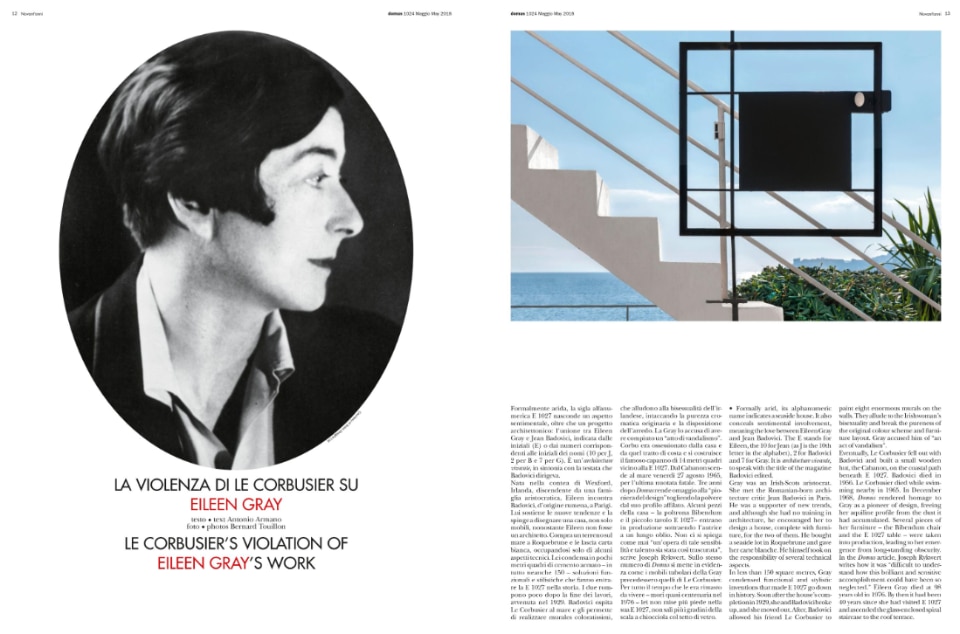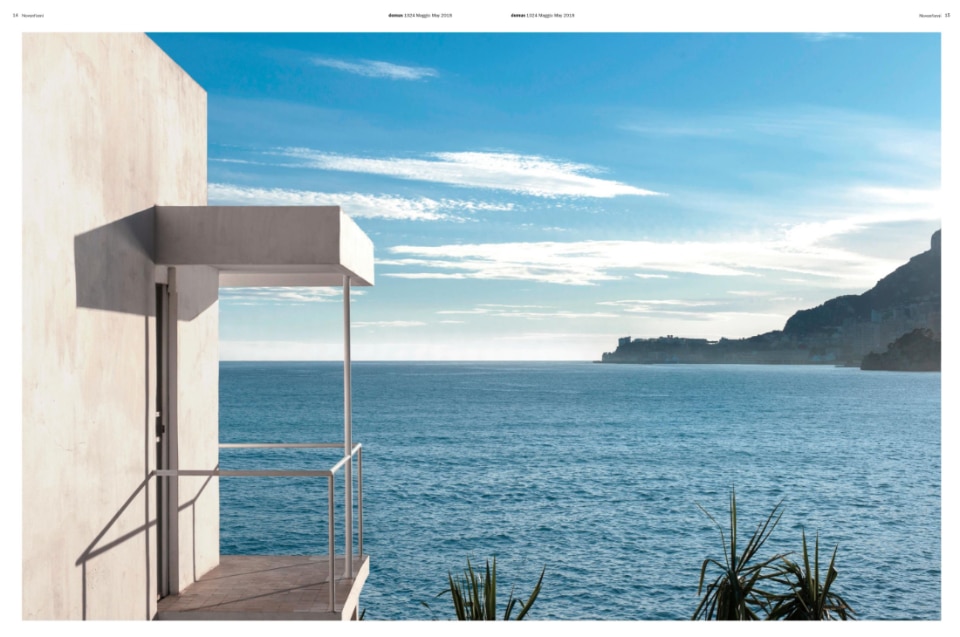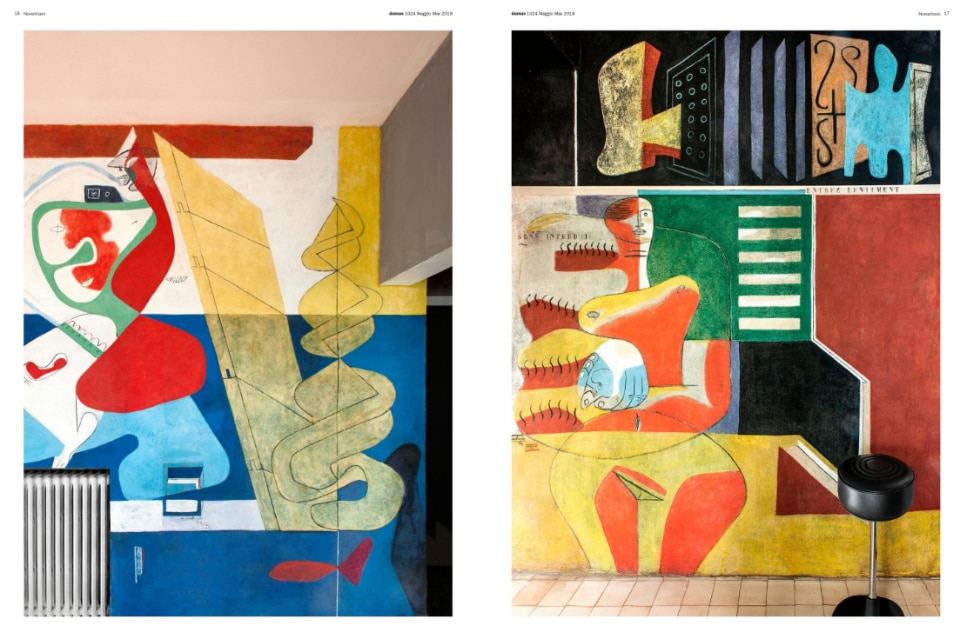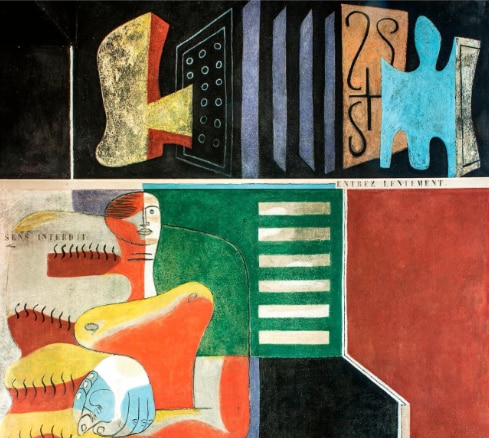It was December 1968 when, on Domus, Joseph Rykwert clamored for the lights to be turned back on the figure of Eileen Gray, a too long-neglected design pioneer. Once again it was a man speaking for a woman, but at least in the terms of a respectful tribute: by the time of this tribute Gray was 90, and Le Corbusier – the last to have published her work, in 1937 – had died three years before, not far from that unique masterpiece of modern architecture Gray had designed in Roquebrune, the villa E 1027. A villa that today is associated as much with the figure of its designer as with the seemingly playful images of Le Corbusier himself painting colorful murals on its walls: those very murals, however, had been an act that Gray denounced as an aggression, to the detriment of an architecture that is also personal history, born of a soon-concluded dimension of intimacy. Domus told this story in May 2018, on issue 1024.

Le Corbusier’s violation of Eileen Gray’s work
Formally arid, its alphanumeric name indicates a seaside house. It also conceals sentimental involvement, meaning the love between Eileen Gray and Jean Badovici. The E stands for Eileen, the 10 for Jean (as J is the 10th letter in the alphabet), 2 for Badovici and 7 for Gray. It is Architecture vivante, to speak with the title of the magazine Badovici edited.
Gray was an Irish-Scots aristocrat. She met the Romanian-born architecture critic Jean Badovici in Paris. He was a supporter of new trends, and although she had no training in architecture, he encouraged her to design a house, complete with furniture, for the two of them. He bought a seaside lot in Roquebrune and gave her carte blanche. He himself took on the responsibility of several technical aspects. In less than 150 square metres, Gray condensed functional and stylistic inventions that made E 1027 go down in history.

Soon after the house’s completion in 1929, she and Badovici broke up, and she moved out. After, Badovici allowed his friend Le Corbusier to paint eight enormous murals on the walls. They allude to the Irishwoman’s bisexuality and break the pureness of the original colour scheme and furniture layout. Gray accused him of “an act of vandalism”. Eventually, Le Corbusier fell out with Badovici and built a small wooden hut, the Cabanon, on the coastal path beneath E 1027. Badovici died in 1956. Le Corbusier died while swimming nearby in 1965.

In December 1968, Domus rendered homage to Gray as a pioneer of design, freeing her aquiline profile from the dust it had accumulated. Several pieces of her furniture – the Bibendum chair and the E 1027 table – were taken into production, leading to her emergence from long-standing obscurity. In the Domus article, Joseph Rykwert writes how it was “difficult to understand how this brilliant and sensitive accomplishment could have been so neglected.” Eileen Gray died at 98 years old in 1976. By then it had been 40 years since she had visited E 1027 and ascended the glass-enclosed spiral staircase to the roof terrace.
Opening image: crop from Domus 1024, May 2018


